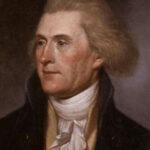Frank Capra’s Mr. Smith Goes to Washington is used as a political satire; to undermine democracy and to expose corrupt politicians. The film was released in 1939, during World War II. Capra uses James Stewart as the main character, Jefferson Smith to bring humor to the film. Capra uses Jean Arthur to play the dramatic role of Clarissa Saunders. Jefferson Smith is an honest country man who is chosen by the governor to be a senator during a political scheme that is driven by the corrupt politician Jim Taylor, played by Edward Arnold. Smith is forced to choose between freedom of the people and being a senator. The theme in Mr. Smith Goes to Washington is an objective point of view used to show the battle between the good politicians and the corrupt politicians; and how easy it can be to fall to the temptations of having political power.
The narrative of the film is based on a historical approach using the Recovery period following the Great Depression. The plot begins to form when Jefferson Smith realizes that Senator Joseph Harrison Paine, played by Claude Rains, is an old friend of Jefferson’s father Clay Smith who was martyred for a lost cause. Jefferson Smith admires Paine because he and Clay Smith worked together fighting for a cause. Jefferson Smith remembers his father’s philosophy, “lost causes are the only ones worth fighting for”. Capra uses this phrase to foreshadow what Jefferson Smith is up against in Washington.
Capra uses a montage, several scenes of Smith’s childlike view of Washington. The idealism that Smith sees Washington D.C as a sacred town in history is shown as Tomas Jefferson and the Declaration of Independence becomes a symbol for Smith, it encourages him that he too can do great things as a senator. President Lincoln is portrayed as an innocent man to rise up out of a rural town, who traveled to Washington and become president; just like Jefferson Smith came from a rural city to become the senator of his state. This scene is used as a discovering shot of Jefferson as a childlike, humble, shy, and innocent man.
Capra uses various shots to show who has the power in each scene. Jim Taylor is constantly shown standing over the people he is in conversation with. This type of film angle is used to show the authoritarian within the plot. Throughout the film scenes involving Smith portrayed him to be the little guy. In a scene shot in the senate room, Smith is filmed from a low angle while standing in a corner; this technique is used to single Smith out and to show his nervousness. The senate room functions as a Mise-en-Scene, to show the significance of the legislative process that takes place within the Senate as well as to show the intensity of conversations that are taking place within the Senate. Another important theme within the plot, is the introduction of a bill, how to advance and stop a bill and most importantly the film depicts the process of a filibuster.
Capra uses several filming techniques; reaction shot, shot reverse shot, long shot, and close-up. The best use of a reaction shot takes place in the Senate room, when Smith falls out on the floor, the camera moves to Mrs. Saunders, who is wailing and crying because Smith fell on the floor. Capra uses the shot reverse shot film technique consistently throughout the film to show conversations between the characters. One of the most important scenes that use the film technique shot reverse shot is when Smith is standing in the Senate room talking to the President. The camera goes back and forth from Smith to the President and back to Smith; Capra uses this to show through the President’s smile, he is on Smith’s side and wants to hear what Smith has to say. Capra uses the film technique of long shots, to show the people sitting in the background of the Senate room and to portray their emotions towards the things going on. Capra uses the close-up shot several times on the President, showing his smile, giving Smith encouragement to continue with his speech.
The realism of the film is realistic within the plot itself. However it is not realistic that any given person can be elected into the Senate without any political knowledge. On the other-hand the main idea within the plot is very eye opening to the audience. It makes the audience aware that politics are corrupt, and that very few good, honest politicians are part of the Senate. Using Taylor, to show that the political arena is typically ran by one person or a group of people who have a lot of power; this gives the audience the impression that the politicians portrayed on the television and who run for office, is actually the little guy, there is a “Taylor” behind the scenes who really runs the show.
Capra did an excellent job of selecting a supportive cast, that developed the film in a way that is interesting, informative, humorous, and dramatic. The film Mr. Smith Goes to Washington is a very exciting film that portrays the realities of how politics really works. From now on America will be wondering who is really behind the political debates of today’s time.


